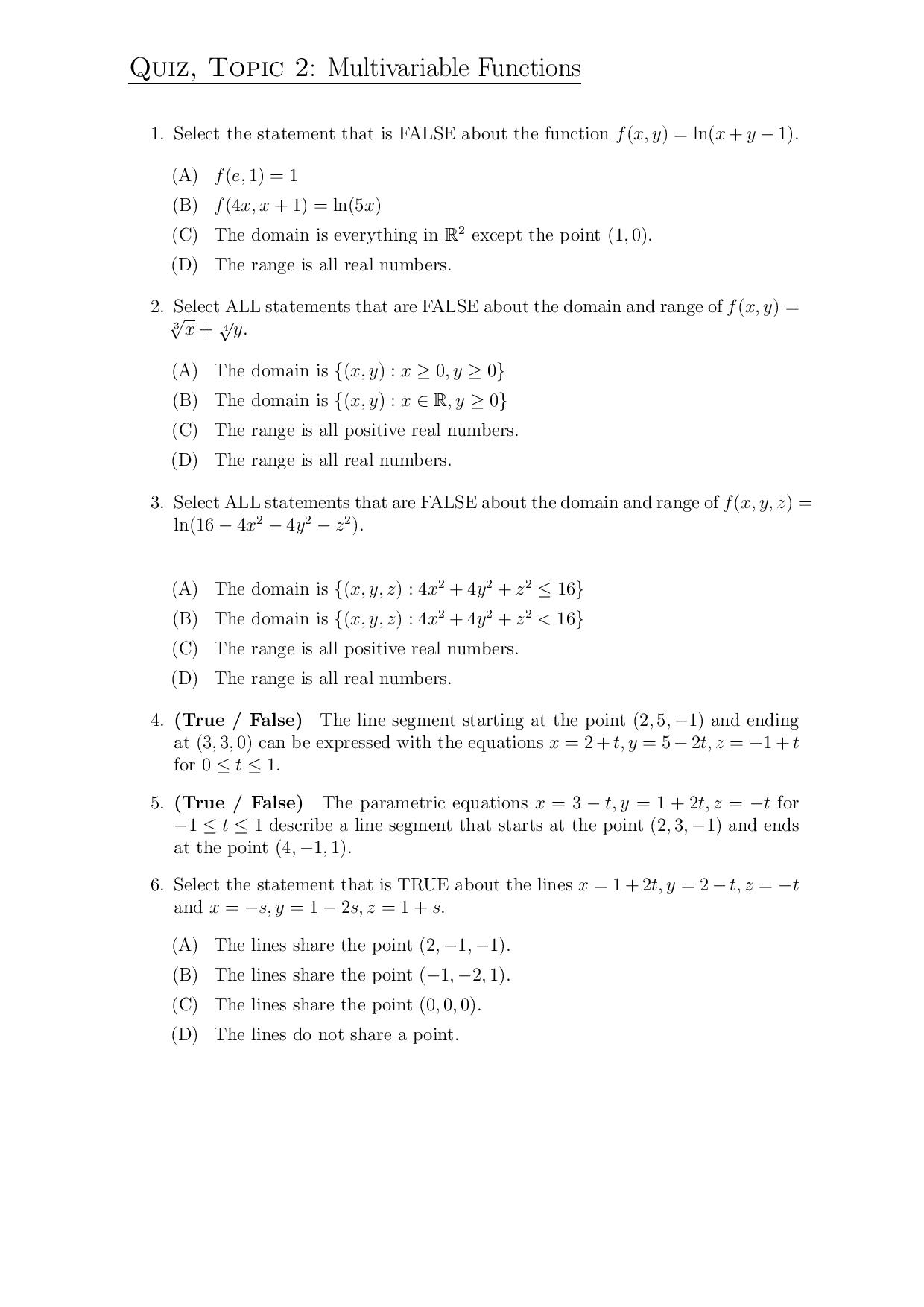MATH 092 Lecture Notes - Lecture 5: Sentence Clause Structure, Ampersand, Associative Property
47 views3 pages
18 Aug 2016
School
Department
Course
Professor
Document Summary
A statement is a sentence which is true or false as it stands. "4 + 3 = 5" are, respectively, true and false mathematical statements. Many sentences occurring in mathematics contain variables and are therefore not true or false as they stand, but become statements when the variables are given values. Simple examples are "x < 4", "x < 1/", "x is an integer", "3x2 + y2 = 10". If p(x) is a frame containing the one variable "x", then p(5) is the statement obtained by replacing "x" in p(x) by the numeral "5". For example, if p(x) is "x < 4", then p(5) is "5 < 4", p(0) is "0 < 4", and so on. Another way to obtain a statement from the frame p(x) is to assert that p(x) is always true. We do this by prefixing the phrase "for every x".
Get access
Grade+20% off
$8 USD/m$10 USD/m
Billed $96 USD annually

Homework Help
Study Guides
Textbook Solutions
Class Notes
Textbook Notes
Booster Class
40 Verified Answers
Class+
$8 USD/m
Billed $96 USD annually

Homework Help
Study Guides
Textbook Solutions
Class Notes
Textbook Notes
Booster Class
30 Verified Answers

